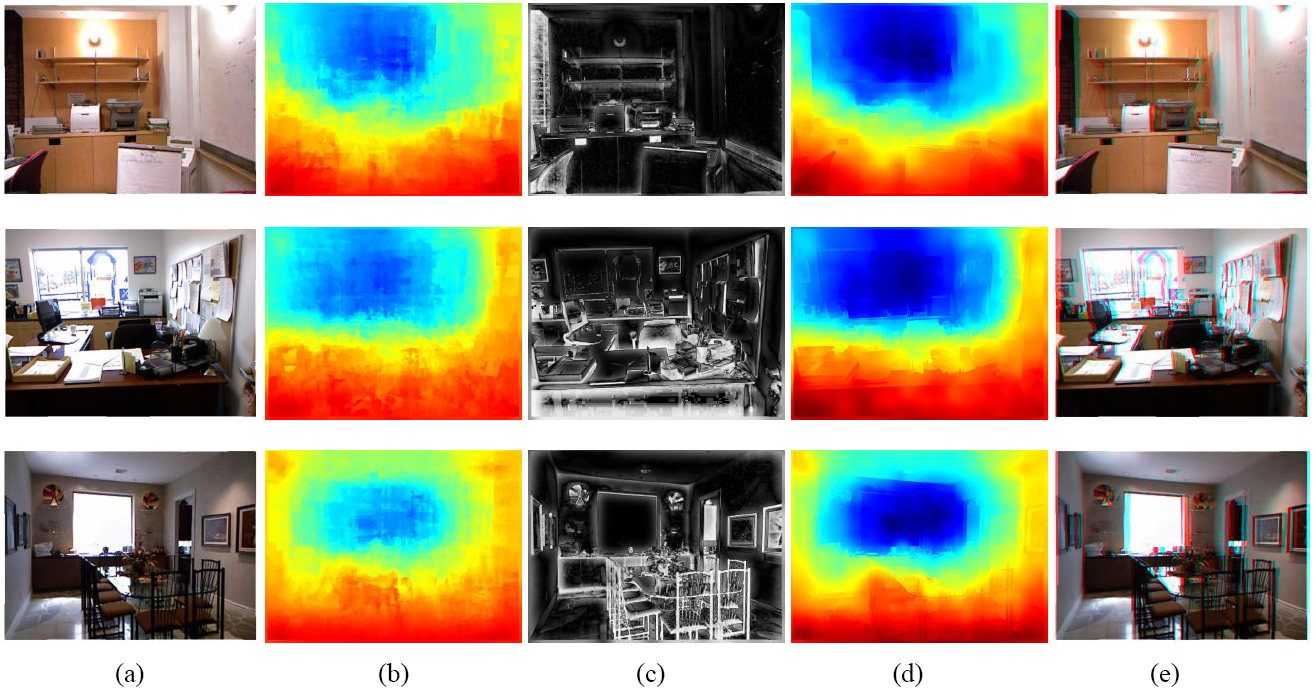Rapid Learning-Based Video Stereolization Using GPU Acceleration
Tian Sun1 Cheolkon Jung1,* Lei Wang1 Joongkyu Kim2
1Xidian University
2Sungkyunkwan University

Abstract
Video stereolization has received much attention in recent years due to the lack of stereoscopic 3D contents. Although video stereolization can enrich stereoscopic 3D contents, it is hard to achieve automatic 2D-to-3D conversion with less computational cost. In this paper, we propose rapid learning-based video stereolization using graphic processing unit (GPU) acceleration. We first generate an initial depth map based on learning from examples. Then, we refine the depth map using saliency and cross-bilateral filtering to make object boundaries clear. Finally, we perform depth-image-based-rendering (DIBR) to generate stereoscopic 3D views. To accelerate the computation of video stereolization, we provide a directly parallelizable solution to be suitable for running on GPU. Experimental results demonstrate that the proposed method is nearly 180 times faster than central processing unit (CPU)-based processing and achieves a good performance comparable to the-state-of-the-art ones.
Executable Files:
Datasets:
NYU Depth Dataset V2: http://www.xidian.cc/~silberman/datasets/nyu_depth_v2.html
Make3D Range Image Dataset-1: http://www.xidian.cc/data.html
Results:

Fig. 1 Depth estimation and virtual view generation by the proposed method. (a) Query image. (b) Initial depth map. (c) Saliency map. (d) Refined depth map. (e) Red-cyan stereoscopic image.
TABLE I
Average time cost comparison of each procedure of the proposed method in CPU and GPU implementation
| kNN Search | Initial Depth Fusion | Depth Refinement | DIBR | |
|---|---|---|---|---|
| CPU (msec) | 175.97 | 2442.93 | 18334.89 | 127.88 |
| GPU (msec) | 26.44 | 664.64 | 102.85 | 31.83 |
| Speed-Up Rate (times) | 6.7 | 3.7 | 178.3 | 4.0 |
Experiments are performed on a PC with AMD Athlon II X4 631 2.60 GHz for CPU programming and NVIDIA GT 630 for GPU programming with CUDA parallel programming environment.
Acknowledgement
This work was supported by the National Natural Science Foundation of China (No. 61271298) and the International S&T Cooperation Program of China (No. 2014DFG12780).